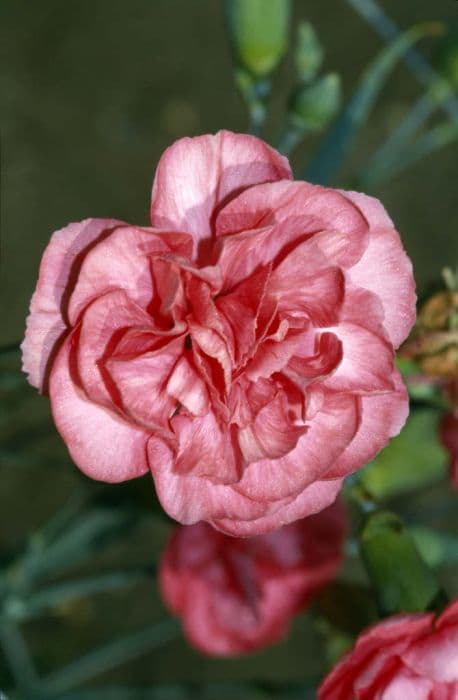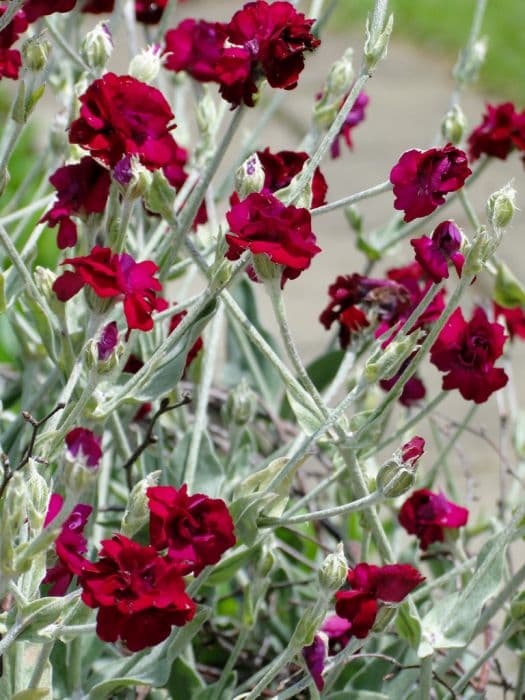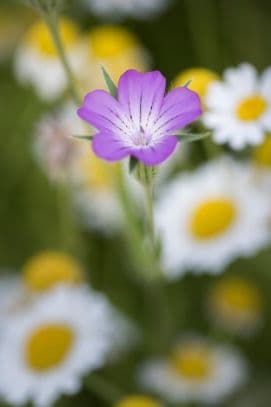Pretty Maid Acanthophyllum cerastioides Pretty Maid = 'Yatgyp'

ABOUT
The Pretty Maid plant is adorned with a dense tuft of leaves that form a lush, mounding cushion. The foliage is typically a rich green, and each leaf is slender and elongated, contributing to the plant's soft, textured appearance. During blooming season, the Pretty Maid produces an array of stunning flowers. These blossoms can vary in color but often come in charming shades of pink, which stand out elegantly against the green leaves. The flowers typically have a delicate, cup-shaped form, inviting a close look to appreciate their intricate beauty. As a perennial, the Pretty Maid has a robust nature that allows it to return each year with a reliable display of color and foliage.
About this plant
 Names
NamesFamily
Caryophyllaceae
Synonyms
Pretty Maid, Yatgyp
Common names
Acanthophyllum cerastioides.
 Toxicity
ToxicityTo humans
The Acanthophyllum cerastioides, commonly known as Pretty Maid, does not have a well-documented profile on its toxicity to humans. There is limited information available regarding its potential toxic effects or specific symptoms of poisoning. As with any plant, caution should be exercised, and it should not be ingested without proper knowledge of its edibility and potential effects. If accidental ingestion occurs and any adverse reaction is noted, medical advice should be sought.
To pets
Similar to its toxicity to humans, there is not much detailed information about the toxicity of Pretty Maid to pets. Without specific evidence of the plant being poisonous, it is still generally advisable to prevent pets from ingesting it, as even non-toxic plants can sometimes cause gastrointestinal upset or other reactions in animals. If you suspect your pet has ingested Pretty Maid and is showing signs of distress, please consult your veterinarian immediately.
 Characteristics
CharacteristicsLife cycle
Perennials
Foliage type
Evergreen
Color of leaves
Green
Flower color
Pink
Height
1 foot (0.3 meters)
Spread
1 foot (0.3 meters)
Plant type
Herb
Hardiness zones
Varies
Native area
Central Asia
Benefits
 General Benefits
General Benefits```html
- Easy to grow - Acanthophyllum Pretty Maid is known for being low maintenance and easy to care for, making it ideal for both beginner and experienced gardeners.
- Drought-tolerant - Once established, it has a good tolerance for drought conditions, making it suitable for xeriscaping or gardens in drier climates.
- Attractive flowers - It produces attractive pink flowers that can add color and visual interest to a garden landscape.
- Groundcover - With its spreading habit, Acanthophyllum Pretty Maid can serve as an effective groundcover, reducing soil erosion and suppressing weed growth.
- Rock gardens - It is particularly well-suited for rock gardens, where its foliage and flowers can complement the stones and other alpine plants.
- Pollinator-friendly - The flowers attract pollinators like bees and butterflies, contributing to the health of the local ecosystem.
- Winter hardiness - It is capable of surviving cold winters, making it a suitable perennial for many temperate regions.
- Low fertilization needs - This plant does not require frequent fertilization, making it easier to care for and better for the environment due to reduced chemical runoff.
 Medical Properties
Medical PropertiesThis plant is not used for medical purposes.
 Air-purifying Qualities
Air-purifying QualitiesThis plant is not specifically known for air purifying qualities.
 Other Uses
Other Uses- Creative landscaping: Pretty Maid can be used in rock gardens for its attractive, low-growing habit that adds texture and color contrast.
- Crafting natural dyes: The leaves and flowers of Pretty Maid may be used in the creation of natural dyes for fabrics or yarns.
- Educational tool: With its unique form, Pretty Maid can be used to teach botany enthusiasts about plant morphology and alpine flora.
- Photography: Gardeners and photographers might use Pretty Maid as a subject for botanical photography, especially given its striking blooms.
- Floral arrangements: Live or dried, the flowers of Pretty Maid can be incorporated into floral arrangements to provide a natural and wild look.
- Sensory gardens: Pretty Maid is an excellent addition to sensory gardens for its textured foliage and vibrant flowers.
- Habitat encouragement: Planting Pretty Maid in gardens can help attract and provide habitat for beneficial insects like bees and butterflies.
- Erosion control: Its mat-forming habit may help stabilize soil in areas susceptible to erosion, such as slopes or embankments.
- Literature and art: Pretty Maid can serve as an inspiration for writers and artists, often symbolizing natural beauty and resilience.
- Green roofing: The plant may be suitable for use in green roof installations due to its drought-tolerant and hardy nature.
Interesting Facts
 Feng Shui
Feng ShuiThe plant Acanthophyllum cerastioides, also known as Pretty Maid, is not used in Feng Shui practice.
 Zodiac Sign Compitability
Zodiac Sign CompitabilityThe plant Acanthophyllum cerastioides, also known as Pretty Maid, is not used in astrology practice.
 Plant Symbolism
Plant Symbolism- Resilience: Acanthophyllum cerastioides, commonly known as the Persian Stonecress, often grows in rocky, arid climates, symbolizing the ability to endure and thrive in challenging conditions.
- Beauty and Delicacy: With Pretty Maid in its name and delicate-looking flowers, it symbolizes beauty and grace, suggesting a gentle appearance but with underlying strength.
- Adaptation: The Persian Stonecress's ability to adapt to poor soils and tough environments makes it a symbol of adaptability and flexibility in life's circumstances.
 Water
WaterThe Pretty Maid plant should be watered moderately, ensuring that the soil is moist but not waterlogged. During the growing season, water the plant once a week using approximately 16 to 32 ounces of water, depending on the size of the plant and the pot. Reduce watering in the winter to once every two weeks or when the top inch of soil feels dry to the touch. It is essential to avoid overwatering, as the Pretty Maid does not like standing water which can lead to root rot. Always check the topsoil for moisture before the next watering.
 Light
LightThe Pretty Maid plant thrives best in bright, indirect light. It should be placed in a spot where it receives filtered sunlight, such as near a window with a sheer curtain. Direct sunlight, especially during hot afternoons, should be avoided as it can scorch the leaves. If natural light is limited, consider using grow lights to provide the necessary light conditions.
 Temperature
TemperatureThe Pretty Maid plant prefers temperatures between 60 to 75 degrees Fahrenheit for optimal growth. Avoid exposing the plant to temperatures below 50 degrees Fahrenheit, as cold drafts and freezing temperatures can cause damage. The plant will also struggle in excessive heat above 85 degrees Fahrenheit, so it's important to maintain a stable temperature environment indoors.
 Pruning
PruningPruning the Pretty Maid plant helps maintain its shape and encourage bushier growth. It should be pruned lightly at the beginning of the growing season or just after flowering. Remove any dead or yellowing leaves and trim back leggy stems to promote new growth. Pruning can be done every few months or as needed to keep the plant looking tidy.
 Cleaning
CleaningAs needed
 Soil
SoilAcanthophyllum requires well-draining soil with a mix of sand, loam, and gravel to replicate its natural habitat. A pH level between 6.0 and 7.5 is ideal for Acanthophyllum.
 Repotting
RepottingAcanthophyllum should be repotted every 2-3 years or when it outgrows its current pot to ensure continued growth and prevent root bounding.
 Humidity & Misting
Humidity & MistingAcanthophyllum prefers moderate to low humidity levels, avoiding overly humid conditions which can lead to fungal issues.
 Suitable locations
Suitable locationsIndoor
Place in bright, indirect light and ensure good air circulation.
Outdoor
Plant in full sun to partial shade with good drainage.
Hardiness zone
5-9 USDA
 Life cycle
Life cycleAcanthophyllum cerastioides 'Yatgyp', commonly known as Pretty Maid, begins its life cycle when seeds are sown in well-draining soil under the appropriate environmental conditions. Germination occurs, typically in the spring, leading to the emergence of small seedlings that gradually develop true leaves and root systems. The plants enter a vegetative growth phase during which they establish a strong root base, and foliage increases through the growing season. As they mature, Pretty Maid plants produce attractive spiky flowers, which can be a significant attraction for pollinators, usually in late spring or early summer. Following pollination, seeds are developed and eventually disbursed, thereby enabling the start of a new generation. In the right conditions, Pretty Maid may exhibit perennial behavior, surviving through multiple seasons, with the dormant phase occurring over winter when above-ground plant parts may die back, to then rejuvenate in the following spring.
 Propogation
PropogationPropogation time
Spring-early summer
Propogation: The most popular method for propagating 'Pretty Maid' (Acanthophyllum cerastioides) is through cuttings. To do this, one should take a stem cutting in the spring or early summer when the plant is actively growing. Choose a healthy, non-flowering stem and cut a 3 to 5 inch (7.6 to 12.7 cm) section just below a node, where leaves or roots naturally grow. Remove the leaves from the lower half of the cutting to prevent rot and dip the cut end into rooting hormone powder to encourage root development. Then, plant the cutting in a well-draining soil mixture and keep it moist but not waterlogged. Place the pot in a bright area with indirect sunlight and maintain a consistent temperature of about 65 to 75°F (18 to 24°C). Roots usually establish within a few weeks, after which the new plant can eventually be transplanted outdoors or into a larger container.









